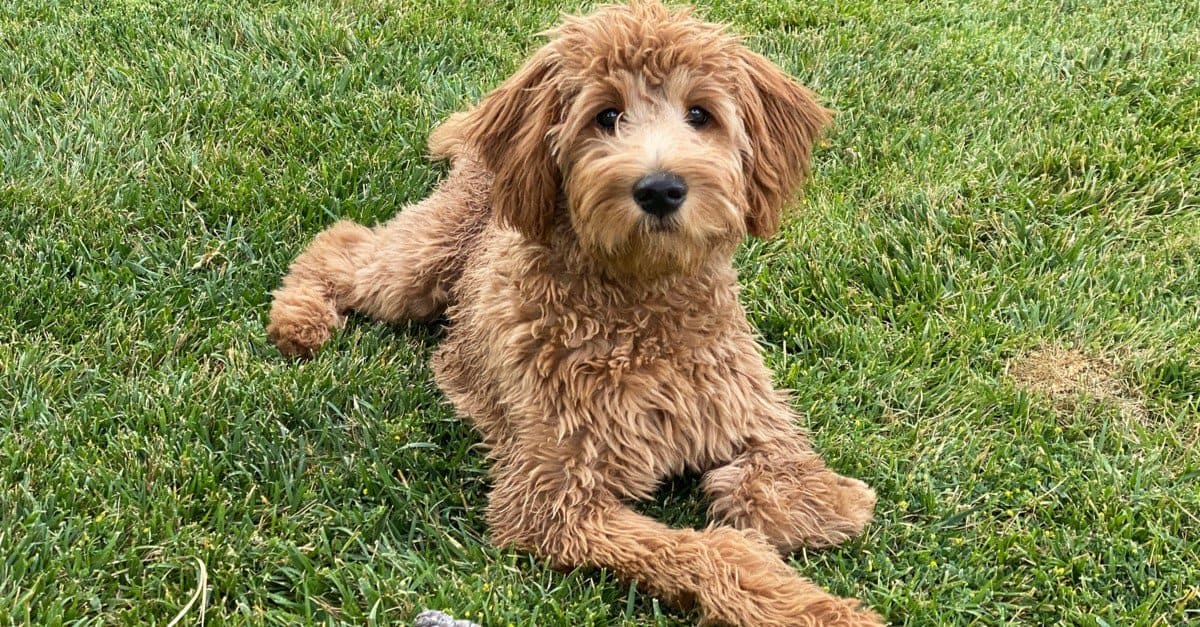Once upon a time, mixed-breed dogs were considered mutts and not commonly kept by anyone. They were seen as problem dogs and often lived as strays or found themselves in shelters (though a few mixed breeds enjoyed some popularity).
Today, mixed breeds enjoy much more popularity than they once did. For instance, these dogs tend to be healthier than purebred dogs, as they have a wider gene pool. Many specialty mixed breeds are available today, with some breeders specializing in some mixed breeds.
Of course, some mixed breeds are still more popular than others. These canines are often smaller as they are utilized for companionship.
1. Cockapoo
Cockapoos are a mix between a Cocker Spaniel and a Poodle. These dogs are fluffy and often do not shed. However, that doesn’t make them hypoallergenic. Despite the claims of some breeders, studies have found that these canines produce the same amount of allergens that shedding dogs do.
These canines have a smaller stature (usually), and they inherit their parents’ energy. Therefore, this breed can be a bit difficult to handle for less active families. They can also get quite large, despite what the norm tends to be. Some breeders use standard Poodles for this mix, which will make the puppies larger.
This breed varies a lot. They can have curly fur, straight fur, or wavy fur. They don’t have many set genetics or traits as a mixed breed. Therefore, they may not be best for owners looking for a particular dog.

Cockapoos are a mix between a
Cocker Spaniel
and a Poodle. These dogs are fluffy and often do not shed.
©Kimberley Rennie/Shutterstock.com
2. Labradoodle
A Labradoodle is a mix between a Poodle and a Labrador. Labradors are known as extremely friendly towards just about everyone. They’re great family dogs, but they do shed a lot. Mixing them with a Poodle may prevent them from shedding, though this isn’t certain. As a mixed breed, these canines may have various traits. It’s completely random.
Often, these dogs are extremely smart. Then, they require a lot of mental stimulation. They can easily become bored and destructive. Therefore, they don’t necessarily work well in families with day jobs, as they can become bored by themselves.
With that said, these dogs often have a low-shedding coat, so they don’t require much grooming. Their coat can vary quite a bit, though. Therefore, some dogs will require quite a bit of grooming, depending on their coat type.
Labradoodles were originally bred as service dogs. They’re still utilized for this purpose today and routinely bred by official organizations.
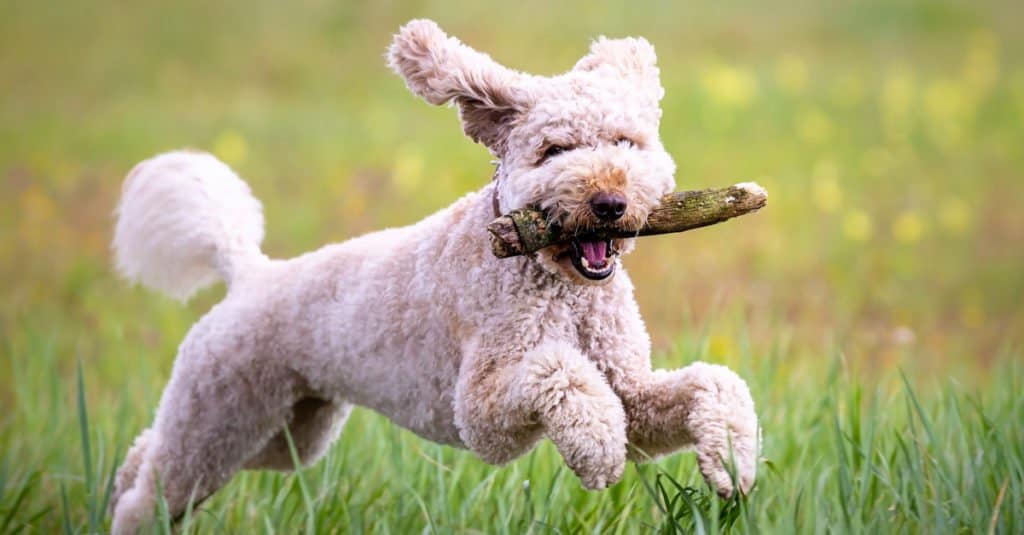
Like other Doodle dogs, mini Labradoodles suffer heavily from separation anxiety. Luckily, your dog will be small enough to accompany you on errands or to the office.
©Lynxs Photography/Shutterstock.com
3. Goldendoodle
Goldendoodles are extremely similar to Labradoodles. After all, both Labradors and Golden Retrievers belong to the same family of dogs. When you mix these two breeds with a Poodle, it makes them even more similar.
These canines have a lot of energy, so extensive exercise is required. They are also very smart, so we only recommend them for families with plenty of extra time on their hands. They’re easy to train, but training is absolutley necassary to prevent boredom. Games and puzzle toys can help too, but human interaction is best.
These dogs often have a curly coat, though this doesn’t make them hypoallergenic. They can have wavy or straight hair instead, though, as it all depends on the genes they inherit from their parents.
This breed also works well as a service dog, and they are often bred solely for this purpose. However, you’ll also find them marketed as good companion animals – and they absolutely can be if you have the time to take care of them.
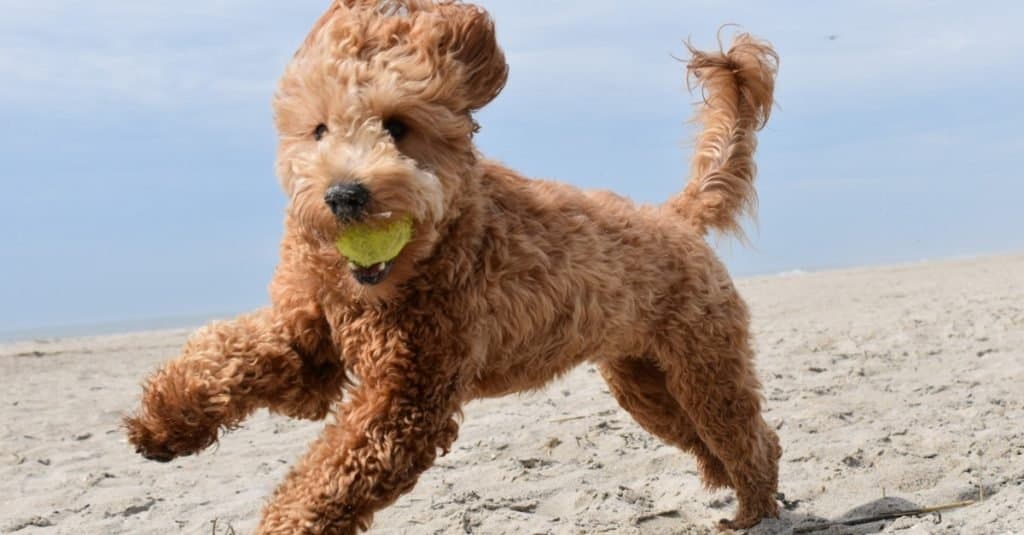
These canines have a lot of energy, so extensive exercise is required.
©W.H. Photography/Shutterstock.com
4. Springador
The Springador is a mix between a Springer Spaniel and a Labrador Retriever. This breed isn’t super popular, but it does seem to be easier to find than other mixed breeds. It’s an alternative to the Labradoodle. They aren’t as intelligent, so they don’t work as service dogs. However, they can make great companion animals for those with less time on their hands.
They require a decent amount of exercise and tend to get rather large. We recommend them specifically for active families, as it can be hard to meet their exercise needs otherwise. As a retrieving dog, this canine loves to play fetch and similar games. They maintain a lot of their playful attitude into adulthood.
This breed can vary a bit – just like any other mixed breed. Many do have straight hair and shed quite a bit. Therefore, you should be prepared for a bit of grooming.

The Springador is a mix between a Springer Spaniel and a Labrador Retriever. This breed isn’t super popular, but it does seem to be easier to find than other mixed breeds.
©Jamie Hall/Shutterstock.com
5. Puggle
The Puggle is a healthy alternative to the Pug. It is a mix between a Pug and a Beagle. Beagles are medium-sized dogs with few health issues, especially working-line Beagles. On the other hand, Pugs are known for being great family dogs, but they are unhealthy. Therefore, mixing these two breeds together gives you a people-oriented dog with fewer health issues – usually.
Just like any mixed breed, there is no telling what traits a particular dog will inherit. Therefore, you have to be cautious if you’re looking for something very specific. They can inherit potential health issues from their Pug parent, for instance.
Often, these dogs have shorter hair that doesn’t require much grooming. However, they can shed quite a bit. Therefore, you should be prepared for brushing if you want to limit the amount of fur lost around your house.
Usually, these canines don’t require much exercise. They are intelligent, but they tend to be stubborn. Therefore, they need to be kept on a leash at all times, and you should begin training as early as possible. Luckily, they tend to be extremely friendly, so they don’t require as much socialization.
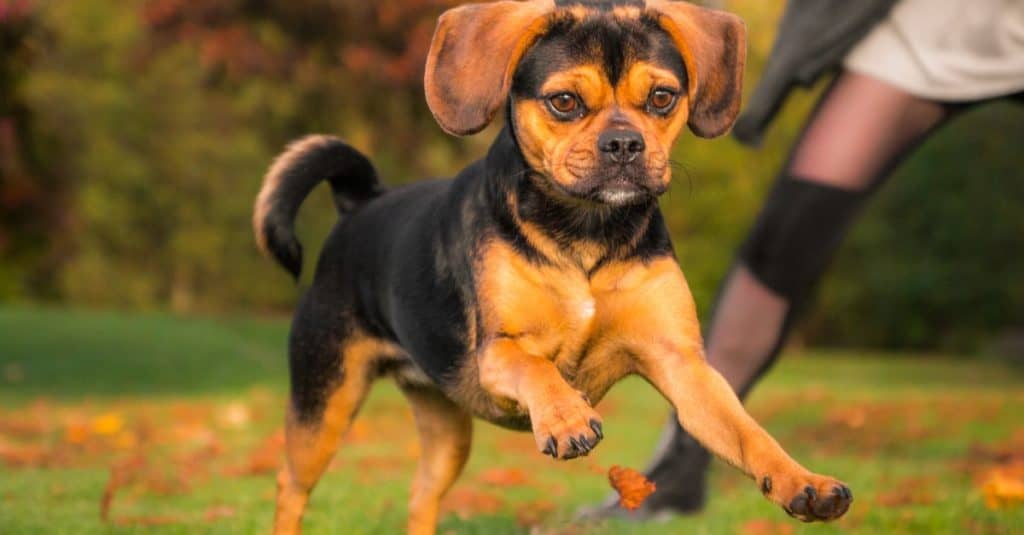
The
Puggle
is a healthy alternative to the Pug.
©Fluechter Photography/Shutterstock.com
6. Cavapoo
The Cavapoo is a mix between a Cavalier King Charles Spaniel and a Poodle. This breed is typically bred for companion purposes and tends to be more laidback than other dogs. They’re extremely cute (usually), and tend to maintain puppy-like traits into adulthood. They make great companion dogs for this reason.
Still, they aren’t completely easygoing. They require a bit of exercise, especially if they take after their Poodle parent. Poodles are extremely energetic, which means their puppies can be, too.
They tend to have low-shedding coats, but some do shed more than others. They aren’t hypoallergenic, and their hair isn’t always curly. You won’t know what you’re getting until your dog reaches a few years old, as their coat tends to change over puppyhood.
Cavapoos are becoming more and more popular. They’re an alternative to the more active Poodle mixes.
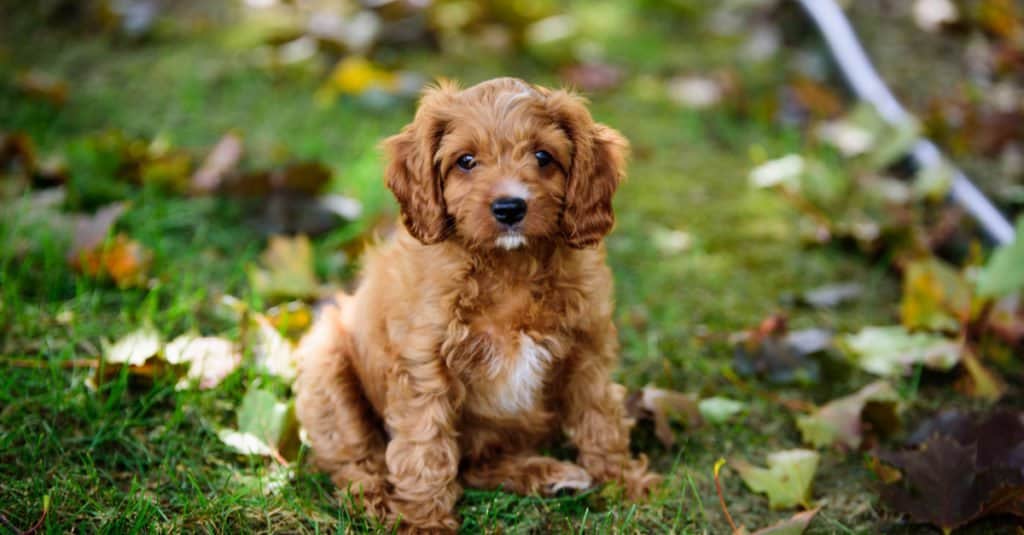
Cavapoos have a lot of energy and require regular attention and exercise.
©AMB-MD Photography/Shutterstock.com
7. Jackapoo
As you might expect, the Jackapoo is another Poodle hybrid. This time, it is a Poodle mixed with a Jack Russel Terrier. Usually, miniature Poodles are utilized in this crossing, as Jack Russell Terriers can be quite small. This crossbreed tends to be quite active, as Jack Russells are extremely energetic.
They require a lot of exercise. Therefore, you’ll have to take them on many walks and schedule plenty of playtime. However, even when their energy needs are met, they tend to stay energetic. While this is great for families with energetic children, it can be a bit much for some families.
These canines aren’t easy to train, as they don’t have great executive functioning skills. In other words, they act more on impulse than anything. Therefore, while they can understand commands, they aren’t typically able to control themselves enough to listen to commands.
With that said, these dogs can be easier to train like Poodles. It all depends on what traits they inherit. Either way, we do recommend starting training early and planning on exercising your canine quite a bit.
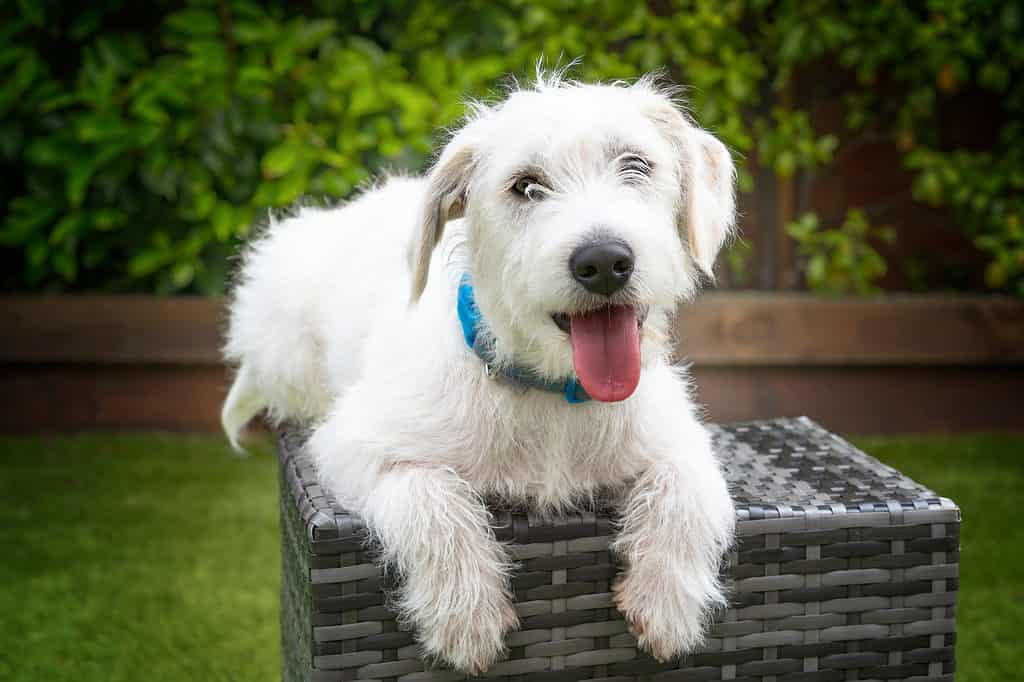
This crossbreed tends to be quite active, as Jack Russells are extremely energetic.
©chrisukphoto/Shutterstock.com
8. Siberian Retriever
The Siberian Retriever has a Siberian Husky parent and a Labrador Retriever parent. This canine is typically bigger at around 50 to 60 pounds. However, there is a lot of variety, but don’t expect these dogs to be small by any means. They’re often very friendly and people-oriented. They love everyone, but they can also be prone to separation anxiety. They want to spend as much time with their people as possible, so they do best in families that spend a lot of time at home.
This mixed breed requires a lot of exercise, as both parent breeds are energetic. They do best in active families that do plenty of outings. You can’t expect them to meet their exercise needs if put into a fenced-in yard by themselves. They often require human input due to their people-oriented nature.
This canine may or may not be very trainable. They’re usually quite smart. However, they can be stubborn, and many have a mind of their own. We highly recommend you start training these canines quickly and early – just don’t expect them to win any obedience competition.
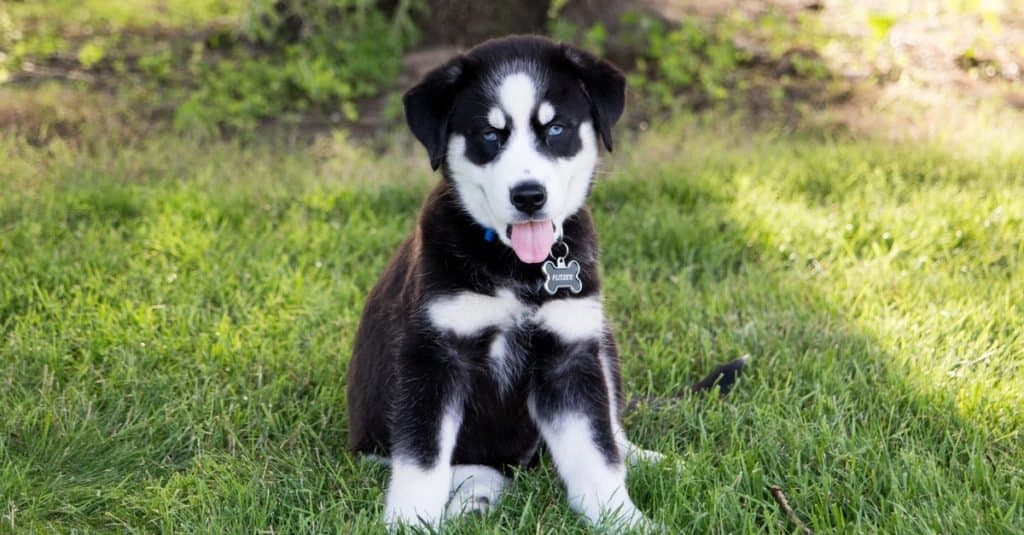
The
Siberian Retriever has a Siberian Husky
parent and a Labrador Retriever parent. This canine is typically bigger at around 50 to 60 pounds.
©Anastasia Musikhina/Shutterstock.com
9. Shorkie
While not as popular as other mixed breeds, the Shorkie is a suitable lap dog for those looking for smaller canines. They usually weigh under 15 pounds, though some may weigh as little as 7. They’re often fluffy like a Shih Tzu and require regular trims. You’ll need to brush their fur regularly, too. Therefore, they aren’t exactly low-maintenance in the grooming arena.
However, they don’t require much exercise in the least. They are extremely small and can get enough exercise indoors around the house. They adapt readily to apartments and other small spaces.
These canines can be less energetic than purebred Yorkies. However, they are often more energetic than a Shih Tzu. They’re also quite healthy, too, though some dogs may have a shortened muzzle. Usually, it isn’t so short that it causes breathing issues.
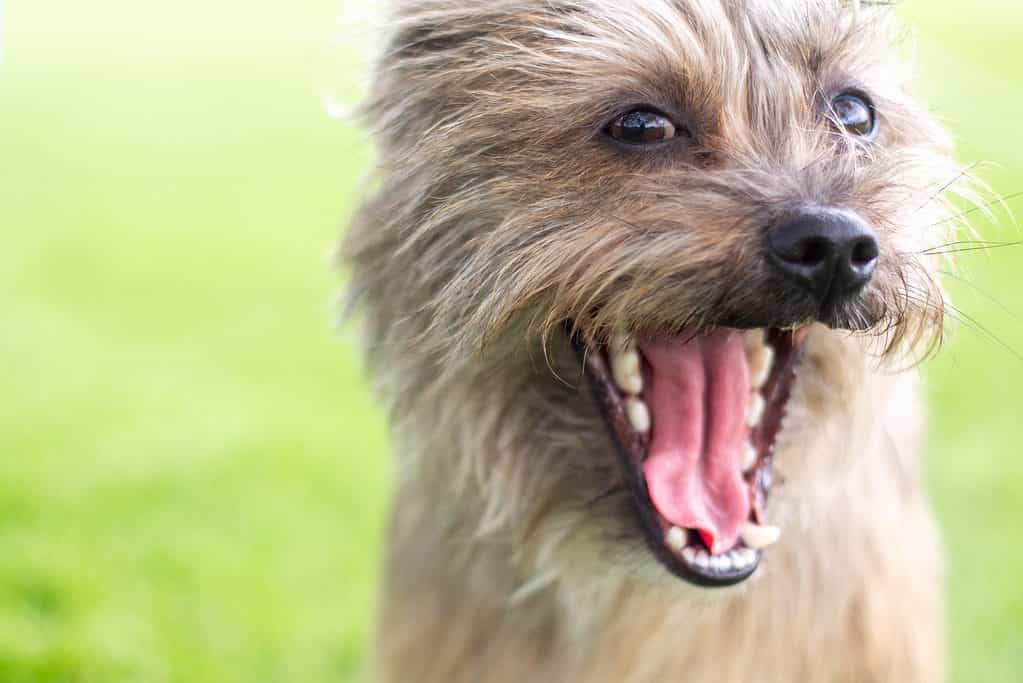
While not as popular as other mixed breeds, the Shorkie is a suitable lap dog for those looking for a smaller canines.
©PokoFoto/Shutterstock.com
10. Pomsky
The Pomsky is a rarer (and expensive) breed that typically requires very careful breeding. You’ll probably aware that Pomeranians and Siberian Huskies aren’t even close to the same size. Therefore, this breed typically requires artificially inseminating a female Siberian Husky, who is large enough to carry the puppies (a Pomeranian female would not be). In the end, this creates a smaller Husky-like dog. Because Pomeranians are fluffy, these puppies tend to be rather fluffy, too.
Their weight can vary a lot. Sometimes, they are very small at only 15 pounds. Other times, they are almost as large as a Husky at 50 pounds. Usually, though, they weigh between 20 to 30 pounds.
These canines are often advertised as looking like Huskies, only smaller. However, they can have the coloration of a Pomeranian, too. Therefore, they don’t always look exactly like a tiny Siberian Husky.
These dogs often require a lot of exercise. However, if they are smaller, this is pretty easy to accomplish. Larger dogs do better in active families, though. (Of course, you won’t know how big your puppy will get when you adopt it.)
This breed is often pretty intelligent, so they understand commands with ease. However, they can be stubborn if they take after their husky parent. Therefore, you should start training early but don’t expect them to follow every command.
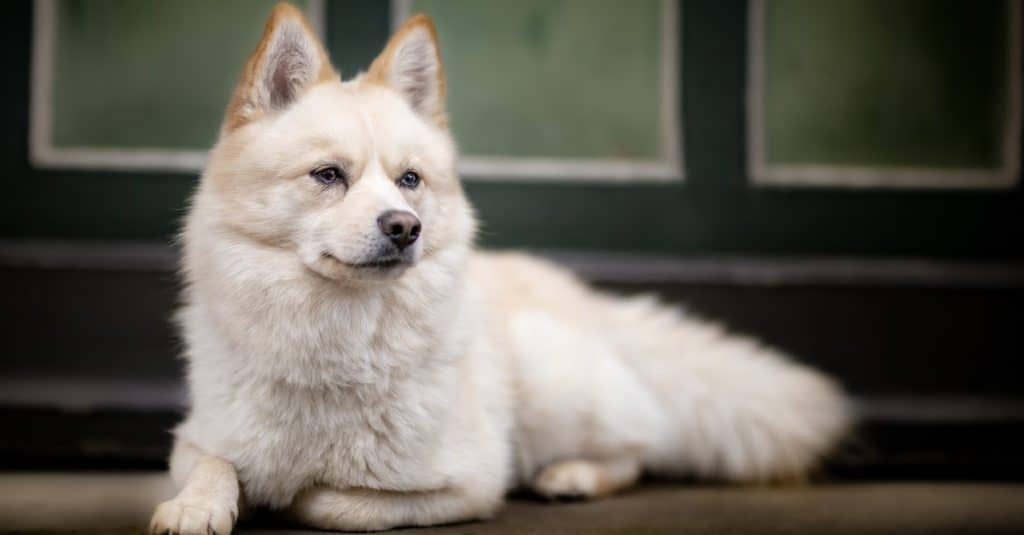
The
Pomsky
is a rarer (and expensive) breed that typically requires very careful breeding.
©Pawtraits/Shutterstock.com
11. Chiweenie
A Chiweenie is a mix between a Chihuahua and a Dachshund. As you’d expect, this canine is very small and therefore, works great in smaller apartments. However, they have huge personalities and a stubborn streak. Therefore, they’re only suitable for owners that are fine not having a completely well-behaved dog.
These canines can be very funny to interact with. They have huge personalities and can keep your life interesting. Therefore, they can make great lap dogs or those looking for an entertaining companion animal. However, they can also require a bit of exercise and tend to be noisy. Keep this in mind before you purchase one.
This breed isn’t terribly popular, so it can be difficult to find. They’re slowly becoming more popular in cities, though, as owners flock to mixed breed dogs that work in small spaces.
While this breed does tend to be healtheir than either purebred canines, they can have back problems like Dachshunds. Dogs with elongated backs are most likely to have problems, as their legs cannot correctly support their longer back. With that said, many breeders specifically bred this mixed dog to prevent these back issues.
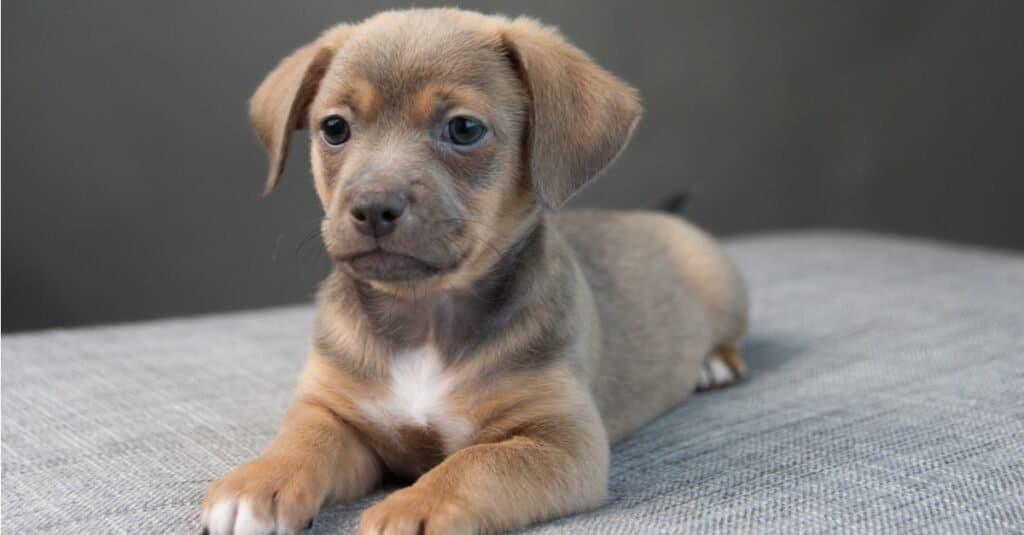
A Chiweenie is a mix between a Chihuahua and a
Dachshund
.
©Anna Hoychuk/Shutterstock.com
12. Yorkipoo
Many potential dog owners love mixing Poodles with other dogs to create curly-haired, low-shedding versions of the other canines. The Yorkipoo is one example of this. This breed is a Yorkie mixed with a Poodle (usually a Miniature Poodle). They can have curly hair and shed little, but they are equally as likely to have shedding, long fur. Therefore, you shouldn’t purchase these if you’re intent on a low-shedding dog.
These dogs are typically pretty small, weighing less than 15 pounds. They can work well in smaller apartments, but they require a decent amount of exercise. Therefore, we recommend them particularly for active families that can take them on a walk or two every day.
These canines are very intelligent, but they can be stubborn. They’ll also not the quietest dogs, especially when bored. Providing plenty of mental stimulation is essential.

This breed is a Yorkie mixed with a
Poodle
(usually a Miniature Poodle).
©zulkarnisezer/Shutterstock.com
| Breed | What breeds are they a mix of? |
|---|---|
| Cockapoo | Cocker Spaniel and Poodle |
| Labradoodle | Labrador Retriever and Poodle |
| Goldendoodle | Golden Retriever and Poodle |
| Springador | Springer Spaniel and Labrador Retriever |
| Puggle | Pug and Beagle |
| Cavapoo | Cavalier King Charles Spaniel and Poodle |
| Jackapoo | Jack Russell Terrier and Poodle |
| Siberian Retriever | Siberian Husky and Labrador Retriever |
| Shorkie | Shih Tzu and Yorkshire Terrier |
| Chiweenie | Chihuahua and Dachshund |
| Yorkipoo | Yorkshire Terrier and Poodle |
Up Next
Ready to discover the top 10 cutest dog breeds in the entire world?
How about the fastest dogs, the largest dogs and those that are -- quite frankly -- just the kindest dogs on the planet? Each day, AZ Animals sends out lists just like this to our thousands of email subscribers. And the best part? It's FREE. Join today by entering your email below.
Thank you for reading! Have some feedback for us? Contact the AZ Animals editorial team.

